* (restored)

AMERICAN PSYCHO: The Discovery
—-I first learnt about American Psycho during my second year as a student at Rhode Island College (around 1999). At that time, I had a huge interest in extreme feminism and thus spent a lot of time at the library in the feminist section. Eventually I came across a feminist book that had two articles on American Psycho. It was the first time I had ever heard about the book, and at the time I didn’t even know who its writer, Bret Easton Ellis, was. The name of the first article was “There Are Better Ways of Taking Care of Bret Easton Ellis Than Just Censoring Him,” written by Tara Baxter (this article may be found in the links section below). I forget who wrote the second article, but I do remember that it dealt with the feminist reaction to the novel in question. While on one hand I sympathized with the feminists, on the other hand I was very much intrigued by the excerpts that they cited as being harmful to women. You see, at the time I was also very interested in serial killers, and so it was only natural that a book about a serial killer would pique my curiosity. And I found something erotic about the more violent passages that kind of disturbed me. Looking back now, some of those extreme feminists seem downright loony, as you can read in the two links below. If anything, I think their actions just generated even more curiosity about the book, which probably didn’t help their cause. I also became interested when I found out that Mary Harron (whose first film, I Shot Andy Warhol, I was a huge fan of) would be adapting it for the big screen. Still, many years went by before I finally went about buying the book (not to mention watching the film).
—-Fast-forward to winter of 2004. I had just started working my first full-time job, at Barnes & Noble. During this period I was extremely interested in the, for want of a better term, “dark side of the human soul.” In particular I was interested in examining my own dark side, an examination that is still ongoing, though not as intense as it was back then. I was immersing myself in black magic, books by people like Dennis Cooper and Peter Sotos, and listening to very violent power electronics music made by bands such as Whitehouse, who I had discovered a few years earlier, while I was still in college. I had read somewhere that William Bennett, Whitehouse’s lead singer, was a big fan of American Psycho and Bret Easton Ellis in general. Remembering all those violent passages I had read years ago at RIC, I decided the time had finally come to read the book. So I purchased it at the local Borders sometime in March of 2004, and watched the movie the following month. I figured it would be a good way of exploring my violent fantasies regarding women, fantasies that are not quite as vivid today as they were back then, though they still crop up from time to time (some of these more recent fantasies including mutilating a woman’s asshole with a butcher knife and forcing her to eat her own sphincter, and another involves pouring bleach down a woman’s cunt using a rolled-up Dworkin book as a funnel… yeah, I’m creative like that).
—-To make a long story longer, I fell head over heels in love with the book. To state it had a huge impact on me would be a dramatic understatement. I felt like I had finally discovered something I had been searching for my entire life. Something that made me feel complete. Something that vindicated my own theories regarding what you could and couldn’t do in fiction. A book that didn’t just break the literary rules, it shat all over them. I didn’t understand how people found the book boring, as I found it totally intriguing, with it’s dense layers upon layers of language, the massive amount of banal information that it bombarded the reader with, information I soon came to interpret as valuable data meant to be catalogued. I don’t often re-read books but American Psycho is one that I’ve read over and over again. The first time I read it was just for pleasure and cheap titillation. Now I read it more for the humor than anything else, as it really does have a lot of laugh out loud moments, especially if your sense of humor is as sick and twisted as mine. Soon I began taking notes. Lots of notes. Analyzing the novel’s internal timeline. Making a list of all the songs that get referenced in the book. Creating lists of the articles of clothing Patrick Bateman wears during the course of the novel. Eventually, I became obsessed with the book. I decided that I would become one of the most obsessive American Psycho fan boys to ever walk the earth. I wanted to become, in other words, an American Psycho scholar (why not? I already classify myself as, among other things, an H.P. Lovecraft historian). It should also be observed that the book had a huge effect on my own writing (some of you may recall that on the Confusion day I created back in December I listed Bret Easton Ellis as one of my book’s primary influences, in particular the book American Psycho).
—-What follows is not just an article about the book itself, but also a chronicle of my obsession with the book. As such, it deals less with the themes of the novel (which have been over-analyzed to death anyway by others) and functions more as a microscopic look at various aspects of the book that interest me. It begins with a short history of the novel and its reception (most of which is culled from Jamie Clarke’s excellent interview with Bret Easton Ellis: see links below), proceeds onward to a very detailed profile of the book’s anti-hero Patrick Bateman, analyzes the timeline of the book’s narrative, looks at the locations mentioned in the book, brief thoughts on the film and the book’s use of music, a few choice extracts from the text itself, and so on. It ends with a few questions about the book I’d like to ask Ellis himself should I ever meet him one day, a brief trivia section, and finally some links of interest. Relevant pictures are scattered throughout to illustrate certain points. I’m not sure if this will be of interest to anyone who hasn’t read the book yet (or even people who have read the book), but I do hope it sheds the notion that fans of the novel are illiterate alpha male jocks who only read it for the sex and gore. Sure, the sex and gore are fun, but there’s also so much other aspects of the novel worth analyzing, as I’m sure you’ll see.
____________
American Psycho’s reaction:
Much has been written about the outrage that greeted American Psycho upon publication, so I don’t want to spend too much time dealing with that here. So I’ve just chosen to post a few excerpts from this website. It should give one a good idea about how people reacted to the book.
“That inflamed commuter summed up much of the furor that greeted the publication of American Psycho. More than this, and unusually, condemnation of the work both actually preceded, and affected, its publication. Although Ellis had been paid a substantial U.S. $300,000 advance by Simon & Schuster, pre-publication stories based on circulating galley proofs were so negative—offering assessments of the book as: ‘moronic … pointless … themeless … worthless (Rosenblatt 3), ‘superficial’, ‘a tapeworm narrative’ (Sheppard 100) and ‘vile … pornography, not literature … immoral, but also artless’ (Miner 43)—that the publisher cancelled the contract (forfeiting the advance) only months before the scheduled release date. CEO of Simon & Schuster, Richard E. Snyder, explained: ‘it was an error of judgment to put our name on a book of such questionable taste’ (quoted in McDowell, “Vintage” 13). American Psycho was, instead, published by Random House/Knopf in March 1991 under its prestige paperback imprint, Vintage Contemporary (Zaller; Freccero 48) – Sonny Mehta having signed the book to Random House some two days after Simon & Schuster withdrew from its agreement with Ellis. While many commented on the fact that Ellis was paid two substantial advances, it was rarely noted that Random House was a more prestigious publisher than Simon & Schuster (Iannone 52).
—-After its release, American Psycho was almost universally vilified and denigrated by the American critical establishment. The work was criticized on both moral and aesthetic/literary/artistic grounds; that is, in terms of both what Ellis wrote and how he wrote it. Critics found it ‘meaningless’ (Lehmann-Haupt C18), ‘abysmally written … schlock’ (Kennedy 427), ‘repulsive, a bloodbath serving no purpose save that of morbidity, titillation and sensation … pure trash, as scummy and mean as anything it depicts, a dirty book by a dirty writer’ (Yardley B1) and ‘garbage’ (Gurley Brown 21). Mark Archer found that ‘the attempt to confuse style with content is callow’ (31), while Naomi Wolf wrote that: ‘overall, reading American Psycho holds the same fascination as watching a maladjusted 11-year-old draw on his desk’ (34). John Leo’s assessment sums up the passionate intensity of those critical of the work: ‘totally hateful … violent junk … no discernible plot, no believable characterization, no sensibility at work that comes anywhere close to making art out of all the blood and torture … Ellis displays little feel for narration, words, grammar or the rhythm of language’ (23). These reviews, as those printed pre-publication, were titled in similarly unequivocal language: ‘A Revolting Development’ (Sheppard 100), ‘Marketing Cynicism and Vulgarity’ (Leo 23), ‘Designer Porn’ (Manguel 46) and ‘Essence of Trash’ (Yardley B1). Perhaps the most unambiguous in its message was Roger Rosenblatt’s ‘Snuff this Book!’
—-There were other unexpected responses such as the Walt Disney Corporation barring Ellis from the opening of Euro Disney (Tyrnauer 101), although Ellis had already been driven from public view after receiving a number of death threats and did not undertake a book tour (Kennedy 427). Despite this, the book received significant publicity courtesy of the controversy and, although several national bookstore chains and numerous booksellers around the world refused to sell the book, more than 100,000 copies were sold in the U.S.A. in the fortnight after publication (Dwyer 55). Even this success had an unprecedented effect: when American Psycho became a bestseller, The New York Times announced that it would be removing the title from its bestseller lists because of the book’s content. In the days following publication in the U.S.A., Canadian customs announced that it was considering whether to allow the local arm of Random House to, first, import American Psycho for sale in Canada and, then, publish it in Canada (Kirchhoff, “Psycho” C1). Two weeks later, when the book was passed for sale (Kirchhoff, “Customs” C1), demonstrators protested the entrance of a shipment of the book. In May, the Canadian Defence Force made headlines when it withdrew copies of the book from the library shelves of a navy base in Halifax (Canadian Press C1).”
(Note: Oddly enough, during this whole controversy the book attracted very few individuals who were willing to go out on a limb and endorse the fact they liked it, though I think Gore Vidal did so. Even Norman Mailer’s article defending the book that appeared in Vanity Fair was kind of backhanded in terms of compliments, essentially claiming that Ellis wasn’t a talented enough writer to work with such powerful material. But he did acknowledge that the book forced the reader to look at “intolerable” material, and that so few books did that anymore. Indeed, I think we need more books like American Psycho, books that cause a sensation. What we have these days is pretty lame. Jim Frey lying about his past in A Million Little Pieces? Christians outraged over The Da Vinci Code? Kaavya Viswanathan’s How Opal Mehta Got Kissed, Got Wild and Got a Life was plagiarized? Big fucking deal. We need a new literary outrage!)

PATRICK BATEMAN PROFILE
Name: Patrick Bateman
Age: 26 (at start of novel)
Born: October 1962?
Astrological sign: Libra
Siblings: Sean Bateman
Parents: Father (deceased… died in 1985?) Mother (committed to Sandstone, an insane asylum.)
Relationship: fiancé of Evelyn Richards
Friend of: Timothy Price, Craig McDermott, Dick Van Patten
Education: Exeter Preparatory School (1980) Harvard (1984), then Harvard Business School (1986)
Job: Vice President (?) at Pierce & Pierce Law Firm (Wall Street), specializing in Mergers & Acquisitions.
Apartment: The American Gardens Building on 55 West 81st street, on the Upper West Side of Manhattan (Ellis has stated that this buildings does not exist). Bateman’s apartment number is Ten I.
Favorite sport: Baseball. His preferred team is the New York Mets.
Favorite water: Evian (mentioned about 14 times in the book)
Favorite soda: Diet Pepsi (mentioned close to ten times in the book)
Favorite drink: J&B; on the Rocks (mentioned about 29 times in the book)
Favorite person: Donald Trump
Favorite TV shows: Late Night With David Letterman, The Patty Winters Show, Jeopardy!, Murphy Brown, The Cosby Show, ALF
Favorite band: The Talking Heads
Other favorite bands: Genesis, Phil Collins, Mike & the Mechanics, Huey Lewis & the News, Whitney Houston, Madonna, U2, the Kingsmen, Bobby McFerrin, Bon Jovi, Belinda Carlisle, INXS, The Traveling Wilburys, Kenny G, Richard Marx, Stephen Bishop, Christopher Cross, Paul Butterfield, Vivaldi, Pachelbel, Dizzy Gillispie, Nat King Cole, Frank Sinatra, Janet Jackson, Beach Boys, etc.
Favorite album: The Return of Bruno (Bruce Willis)
Favorite reading material: Sports Illustrated, USA TODAY, A Farewell to Arms, Fatal Vision, New York Post, Money, GQ, Playboy, Cunt on Cunt, Lesbian Vibrator Bitches, Financial Times, Wall Street Journal, New York, Fortune, The Economist, Why it Works to be a Jerk, Art of the Deal, Elegance: A Guide to Quality in Menswear, Esquire, Garrison Keillor, Ted Bundy biographies
Favorite films: Tiger Warsaw, Dirty Dancing, Texas Chainsaw Massacre, A Farewell to Arms, Roman Holiday, Bloodhungry, Ginger’s Cunt, She-Male Reformatory, Body Double (his favorite?), Inside Lydia’s Ass, Toolbox Murders, Blond, Hot, Dead, Pamela’s Tight Fuckhole, Secret of my Success, Rambo, Cocktail, Top Gun.
Favorite artists: David Onica, George Stubbs, Frank Stella, Mark Kostabi
Favorite watch manufacturer: Rolex (mentions his Rolex about 27 times in the book)
Favorite credit card: American Express Platinum (mentioned numerous times)
Favorite prescribed drugs: Valium, Xanax, Halicon, Dalmane, Sominex, too many to list really
Favorite illegal drug: Cocaine
Favorite Broadway musical: Les Miserables
Favorite hangout: Harry’s at Hanover Street, Fluties at Pier 17, The Harvard Club, Tunnel
Favorite vacation spot: Aspen
Favorite recreational sport: Skiing?
Favorite serial killer: Ted Bundy. Also: Son of Sam, Hillside Strangler, Leatherface, John Wayne Gacy, Charles Manson, Ed Gein,
Magazine subscriptions: Sports Illustrated, Esquire, Playboy, the Polo catalog
Gets his groceries at: D’Agostino’s, Upper West Side
Gets his haircut at: Gio’s at Pierre Hotel
Rents his videotapes at: VideoVisions, a few blocks away from his apartment building
Likes: Jami Gertz, Donald Trump, working out, hard bodies, Aspen, the AT&T; building (at night, only at night), videotapes, Zagat, pornography (especially lesbian pornography), Hemingway, slasher films, Woody Allen comedies, Oliver North, Les Miserables, fitting in, ATM Machines, Walkman, smoking cigars (mentioned about 12 times in the book), securing a reservation at a popular restaurant, sunglasses (especially Ray-Bans and Wayfarers).
Dislikes: his brother, live music, rap music, punk rock, Elvis Costello, Peter Gabriel, his job, cheap haircuts, trailer parks, the homeless, minorities, hockey, bowling alleys, barbecued ribs, the Russians, lots of things when you get right down to it.
(Note: Many of the yuppies of the novel, including Patrick, are often seen doing cocaine. Ditto for their girlfriends. This seems like a logical drug of choice, actually. On April 16, 1987, 15 employees of various Wall Street firms were arrested and charged with selling cocaine, and two undercover cops stated that same month that they believed that the drug was either used or accepted by 90% of Wall Street).
(Second note: It is argued that as a character Bateman has little consistency, but as the above profile shows there is some stability to his character. For example, he usually is seen drinking Evian water in multiple scenes, and the same goes with Diet Pepsi and J&B; on the Rocks. There are also two points in the book where Ellis describes what Bateman eats for breakfast and both times the food items match in a fairly close way. Oddly enough, Bateman trashes the music of Bruce Springsteen in the “Genesis” and “Huey Lewis” chapters yet later on in the book mentions how he thinks the happiest song of all time is “Brilliant Disguise,” a Springsteen song. For the record, Bateman thinks the saddest song of all time is “You Can’t Always Get What You Want” by the Rolling Stones, though Bateman thinks that it is the Beatles who did that one).
____________
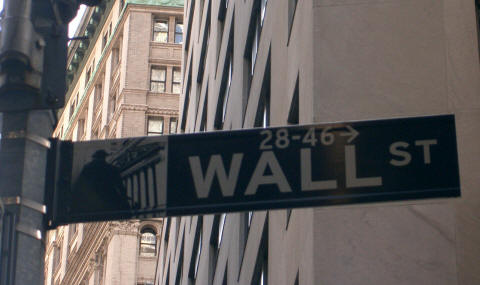
AMERICAN PSYCHO: The Timeline
—-Many of Ellis’ books strive to capture a very specific time and place. In the case of American Psycho, the time is the late 80’s and the place is Manhattan. But what year does AP actually take place in? At the very start of The Rules of Attraction, we’re informed that that story takes place in the Fall of 1985. With AP, however, we get no such date. There are some clues, though. Mainly in the “Concert” chapter, where Bateman and his friends go see U2 play at the Meadowlands, and how he mentioned that the band was on the cover of TIME magazine the previous week. U2 did appear on the cover of that magazine on April 27, 1987, and they did play a series of concerts at the Meadowlands, starting on May 11 and ending on May 16 (the chapter in question takes place in the month of May). When Timothy Price is flipping through a copy of the New York Post in the very first chapter (“April Fool’s”) he complains about many of the topics covered in the paper, including Nazis. This was around the time that Rupert Murdoch was trying to find Josef Mengele in South America, covering the pursuit in the pages of the Post (this was later mocked in the May 1987 issue of Spy magazine). If I’m not mistaken the Les Miserables show hit Broadway in the year 1987. Much of the music playing at the first Tunnel chapter is from 1987 (such as “Pump up the Volume” and “New Sensation”, and in a later chapter, “Faith”). Also, Ellis writes that he started the outline for the book in December of 1986, and that his outlines usually take 3-4 months to complete. If AP was no exception, that would mean he must have started the actual writing around April 1987 (the book begins on April Fool’s day). So I think that American Psycho’s most likely starting date is April 1, 1987.
—-Of course, this is by no means an accurate guess. At one point in the book, when Bateman is being questioned by detective Donald Kimball, he reveals that he was seven years old in 1969. At the start of the book we learn that Bateman is 26, and that he will turn 27 in October (the month of his birthday). If this is true, then that would mean the book would start in 1988. However, we must take into consideration that Bateman lies all the time. The book ends sometime in early 1989, a few months after George Bush’s inauguration. On the very last page, Bateman says that he’s 27. If this is the case, that would mean the book would only have covered one year, which is impossible, as there is certainly a passage of time, as can be seen here:
April: “April Fool’s” (first chapter) Most likely 1987.
May: The chapters “Morning” through at least “Concert” (“Killing Dog”, “Yale Club” and “Girls” aren’t dated) Most of the first half of the book takes place in May, actually.
December: The chapters “Shopping” and “Christmas Party”
(nothing in January, February, March, April)
May: “Nell’s” (mid-May, to be precise) Is this 1988 then?
June: “Paul Owen” (killed on the 24th of June)
July: most likely the chapters “Paul Smith”, “Birthday, Brothers”, “Lunch With Bethany”, “Thursday” and “Dinner with Secretary”
August: “Detective” (possibly… that one might be late July) and “Summer”
Autumn: “Girls”, “Confronted by Faggot”, “Killing Child at Zoo”, “Girls”
October: “Rat”, “Another Night”, “Girl”
November: “At Another New Restaurant” (first week of November), “Tries to Cook and Eat Girl”, “Taking an Uzi to the Gym”, “Chase, Manhattan”, “In Bed With Courtney” (before Thanksgiving… This must be 1988, actually, as in the “eats girl” chapter Bateman mentions the new CBS sitcom Murphy Brown, which debuted on November 19 of that year).
December: “Something on Television” (possibly… Bateman mentions that Bundy is weeks away from execution. Ted Bundy was executed on January 24, 1989).
After this, the chronology starts to get messed up. I do not know if this was what Ellis intended, or if he simply lost track of the dates while writing.
April: “Sandstone”(I still think this chapter might be a flashback to an earlier event).
????: “Best City For Business” (Ellis says this chapter is 161 days after Bateman kills some girls at Owen’s place, which was in the autumn, most likely October, placing this chapter either in March or April).
September: “End of the 1980s” (I think that either this is a flashback to earlier in the year, or maybe Ellis just messed up on the month. Or maybe it was a deliberate error).
December: “Aspen”
February: “Valentine’s Day” (this chapter is set on a Thursday. In 1989 Valentine’s fell on a Thursday).
After “Valentine’s Day”, there are a few undated chapters, then one last chapter, “Harry’s”, which takes place a few months after Bush’s inauguration on January 20. So, most likely sometime in the spring of 1989.
—-I guess what I’m trying to get at is that it’s impossible to put together a 100% coherent timeline of the events that take place in American Psycho, though it does tend to follow a mostly linear structure until the last 50 pages or so, when Bateman’s psyche starts to fragment. Personally, I say it starts in April 1987 and ends sometime in the spring of 1989… Two years. Another hint that the book ends in 1989 is when Bateman refers to wanting to see Sting’s “Threepenny Opera” in Broadway, which I believe hit stages in 1989. Finally (and I could go on all day like this if I don’t stop myself), I think there was a lot of conflict in Sri Lanka starting around 1987 (didn’t a civil war break out in that country in ‘83 or so?) which explains Tim Price mentioning that country in the opening “April Fool’s” chapter.
—-Of course, there are anachronisms in the text itself. The Madonna song “Like a Prayer” appears in the book’s first May month, but that song wasn’t released to the public until 1989, to my knowledge. The chapter “Lunch With Bethany” appears to take place in the summer of ‘88, but Bateman mentions the Patrick Swayze film Tiger Warsaw which wasn’t actually released until September 23, 1988. There are also facts that are inconsistent with some of Ellis’ other works. In American Psycho, there is a scene where Patrick Bateman has dinner with his younger brother Sean, who was the star of Ellis’ previous book, Rules of Attraction (the main cause of the dinner being Sean’s birthday). This dinner scene takes place in the summer, most likely July. Yet in Attraction it is stated very clearly in the text that Sean’s birthday is in March, not the summer. This all reminds me of the whole Glamorama conundrum, actually. Like in American Psycho, the exact date of Glamorama is never stated, but we can assume that it takes place in the year 1996, due to the character of Chloe Byrnes, who is 26 years old and was born in 1970. Unfortunately, the main character in the book, Victor Ward, is 27 years old. Victor was one of the college students in Rules of Attraction, which took place in the Fall of 1985. So, if we assume the book takes place in 1996, that would of meant that Victor would have been in college at the age of 16 (and considering Victor’s lack of brains, that doesn‘t seem likely)! To further complicate matters, in that book Victor says he went to Camden during the years 1982-1988! One must remember, however, that Ellis started Glamorama in December of 1989, and that he didn’t finish it until 1997, which explains all the mixed-up dates. Still, he probably didn’t count on nerds like me analyzing every one of his books in excruciating detail.
____________
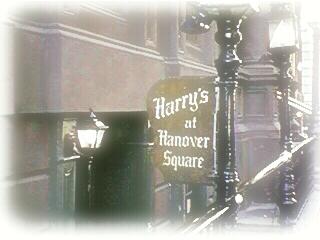
AMERICAN PSYCHO: The Locations
—-Have you ever read a book and wished that you could just enter it and hang out at the locations mentioned in the text? Well, that’s how I feel about American Psycho. I’m sure to Ellis the yuppie haunts of his characters must have seemed like Hell itself but to me I find it all very exotic: the minimalist apartments, the sterile & trendy restaurants, the hedonistic nightclubs, and so forth. A place I’d love to live in. It would be cool to have a time machine so I could go back to Manhattan during that particular time in the 80’s to see if things actually were like that, if the yuppies really did behave that way. When I acquired Patrick McMullan’s photographic collection so80s I was thrilled when I found out that places mentioned in American Psycho such as Tunnel, Area, and Nell’s actually existed. I began to wonder how many of the restaurants mentioned in the book were real and how many were fake. So I’ve begun ordering Zagat guides for NYC in the late 80’s. So far I’ve just got the 1988 edition. It was really awesome to flip through Zagats and see the names of restaurants mentioned in the book. For example, Harry’s, a popular hangout spot for Bateman and his pals, has an entry:
“Harry’s plain and predictable steaks, chops, broiled fish and pasta are well above average for its Wall Street locale, but this is basically a hard drinking watering hole that hits its frat house stride when the floor traders come in after work.”
—-I’ve also made a list of all the restaurants that get mentioned in the book, in alphabetical order. This list is too big to post here, but for the curious, here’s an example, the “C” list: Café Luxemburg, Camols, Canal Bar, Carly Simons, Contra, Counterlife, Cranes, Crayons, and Cuisine de Savoy.
____________

AMERICAN PSYCHO: The Film
—-Because this whole day is mainly about the book American Psycho, I don’t really want to go into the film. I will say that I enjoy it, love it actually, and it’s a good adaptation. The only thing that’s missing is the violence and some of Ellis’ offbeat humor. While some of the novel’s humor has been translated to the screen (such as the business card showdown and Bateman’s argument with the Chinese drycleaners) other humorous aspects of the book have been eliminated. Take The Patty Winters Show, for example. A fictional TV program created by Ellis, it’s Bateman’s favorite daytime TV talk show. In nearly every fragment of the book he feels the need to inform the reader what the show’s topic was that day, and as the book goes on, the topics become more and more insane. You start off with “Women with multiple personalities” and some of the later topics include “Dwarf Tossing,” “Boy who fell in love with a box of soap,” “Child orgies” and (my favorite) “a Cheerio being interviewed on a very small chair.” The film does away with this “subplot” entirely, which is too bad (all in all, there are 42 Patty Winters topics mentioned in the book). But I can’t really fault the filmmakers because I don’t think there’s been an Ellis adaptation yet that has managed to capture this aspect of Ellis’ work, his funny, surreal little bits of humor that don’t add much to the narrative yet are still good for a laugh (though the film version of Rules of Attraction came very close, even though it neglected to include the girl with a pet snake named Brian Eno). I really think the film would have been even funnier if they would have incorporated some of the Patty Winters stuff. Like the talking octopus who only says the word “cheese” or the old Nazi who juggles grapefruit. Or the Stupid Pet Tricks segment on Letterman in which a German shepherd wearing a Mets cap peels and eats an orange. Or the scene where Bateman gives his fiancé a piece of noodle for her Christmas gift and she mistakes it for jewelry. But, anyway, great film, great sets, great clothes, and Christian Bale makes a great Patrick Bateman (I loved Willem Dafoe as Detective Kimball also).
—-Just for the record, this is, in my opinion, the funniest passage in the book:
—-“I pause, stand up straight, run a hand over my face, breathe in and then lean back down. “Listen to me…” I breathe in again. “They’ve got midgets in there.” I point with a thumb back at the brownstone. “Midgets who are about to sing ‘O Tannenbaum’…” I look at him imploringly, begging for sympathy, at the same time looking appropriately frightened. “Do you know how scary that is? Elves” – I gulp – “harmonizing?” I pause, then quickly ask, “Think about it.” (Page 190)
____________

AMERICAN PSYCHO: The Music
—-One thing that I think sets Ellis apart from most contemporary authors is that his books very often name check a huge number of pop culture references, including song titles. While some literary critics might argue that this dates his work, I think it’s very effective at creating a sense of time and place (and who cares if they make the books dated? American Psycho still sells very well, so what do the critics know?). When I first read the book, one of the things that most impressed me about it was how many songs are listened to by the characters in the text. To me, it seems very realistic, as music is always around us anyway, and I don’t think writers should ignore that. When I took writing courses in college, the only major complaint I ever received was I mentioned too many songs that the listener probably has never heard of. So, when I saw Ellis doing the same thing, it was a real thrill to me. And with the exception of Lunar Park, all his books have massive “soundtracks.” Glamorama, in particular, has like 60+ songs or something. One thing I like about this is that it gives you something else to do after you read the book, that is, go back through it and make a list of all the songs to create your own soundtrack for the book (as you may recall, I did the same thing in my book Confusion, in the hopes that it would inspire readers like myself to make their own soundtracks for the book).
—-Although I was unfamiliar with the music of many of the artists name checked in AP, I made sure to buy as many of the CDs mentioned in the book as possible, with a few exceptions (like The Return of Bruno… even I have standards). It was very fun to listen to some of the albums after having read Bateman’s reviews of them, and I actually enjoyed the second Whitney Houston album and the Genesis stuff (can’t say the same about Huey Lewis, though, but “Hip to be Square” is a great tune whose lyrics really do seem to sum up the book). Here, then, is a list of all the songs that actually get “played” in the book, either on car stereos, Walkmen, CD players, and so on (many more songs are mentioned, but not actually played in real-time by the characters, for example, most of the songs in Bateman’s music review chapters):
“Be My Baby” The Ronettes (Bateman thinks it’s the Crystals) (page 3)
New Talking Heads CD (page 8)
“The Lion Sleeps Tonight” The Tokens (page 24)
New Talking Heads CD (page 28)
Vivaldi on a Walkman (page 39)
“Then He Kissed Me” The Crystals (Bateman thinks it’s by the Ronettes) (page 40)
“Dancing in the Street” Martha and the Vandellas (page 40)
“I Feel Free” Belinda Carlisle (page 52)
“New Sensation” INXS (page 54)
“The Devil Inside” INXS (page 54)
“Love Triangle” (perhaps New Order’s “Bizarre Love Triangle”?) (page 57)
“Pump Up The Volume” (page 59)
“Party all the Time” Eddie Murphy (page 62)
“Sympathy for the Devil” Muzak version (page 63)
Paul Butterfield tape (page 65)
Stephen Bishop/Christopher Cross tape (page 68)
“Canon” Pachelbel (page 70)
New Huey Lewis CD (page 76)
“Cherish” most likely Kool & the Gang (Bateman thinks it’s by the Lovin’ Spoonful) (page 76)
“New Sensation” INXS (page 79)
“The Devil Inside” INXS (page 79)
“I Feel Free” Belinda Carlisle (page 79)
“Faith” George Michael (page 80)
“White Rabbit” New Age version (page 94)
New Christopher Cross tape (page 111)
“Don’t Worry Baby” Muzak version (page 116)
“Life in the Fast Lane” cover version (page 127)
Muzak version of les Miserables (page 137)
“Somewhere” song sung at a gay pride parade (page 139)
“Where the Streets Have no Name” U2 (Bateman hears it as “Where the Beat Sounds the Same”)(page 144)
Early Dizzy Gillespie (page 149)
“Like a Prayer” Madonna (page 150)
“Lightning Strikes” Lou Christie (sung by a Korean guy) (page 151)
“The Lion Sleeps Tonight” The Tokens (page 161)
“Wanted Dead or Alive” Bon Jovi (page 162)
“Les Miserables” Broadway Cast Recording (page 171)
“Joy to the World” sung by a Salvation Army choir (page 178)
“Hark the Herald Angels Sing” sung by a Salvation Army choir (page 179)
Old Christmas songs from the sixties (page 181)
“New Sensation” INXS (page 195)
“Her Shit On His Dick?” (page 198) He says it’s a black guy rapping, but I think he’s referring to the song of the same name by the Bar-B-Q Killers, who had a white female lead vocalist. Weird!
“Take Five” performed by some Jazz band (page 202)
“A Day in the Life” The Beatles (page 215)
“Four Seasons” Vivaldi (page 218)
The Supremes? (page 251)
Kenny G CD (page 266)
Traveling Wilburys CD (page 304)
“The Worst That Could Happen” Brooklyn Bridge? (Bateman credit’s the song to Frankie Valli) (page 328)
Richard Marx CD (page 345)
“Witchcraft” Frank Sinatra (page 363)
“Like a Prayer” Madonna (page 371)
Bix Beiderbecke tape (page 390)
—-Bateman’s music tastes seem to revolve around 80’s pop, classical music, muzak versions of oldies, plus songs from the 50’s (and also a few black girl groups from the 60’s).

What follows is a list of all the songs that appear in the movie adaptation:
• “True Faith”
Performed by New Order
“Walking on Sunshine”
Performed by Katrina and the Waves
“Simply Irresistible”
Performed by Robert Palmer
“I Touch Roses”
Performed by Book of Love
“Hip to be Square”
Performed by Huey Lewis & The News
“Lady in Red”
Performed by Chris De Burgh
“In Too Deep”
Performed by Genesis
“Sussudio”
Performed by Phil Collins
“What’s On Your Mind? (Pure Energy)”
Performed by Information Society
“The Greatest Love Of All”
Performed by The London Philharmonic Orchestra
“Im Nin’al”
Ofra Haza
“Paid In Full (Coldcut Remix)”
Performed by Eric B. & Rakim
“Music for 18 Synths”
Performed by Sheldon Steiger
“Secreil Nicht”
Performed by The Mediaeval Baebes
“Everlasting Love”
Courtesy of Opus 1
“Deck the Halls”
Stock Music Provided by Chris Stone Productions Ltd. Canada
“Joy to the World”
Stock Music Provided by Chris Stone Productions Ltd. Canada
“Ya Llegaron A La Luna”
Performed by Santiago Jiménez, Jr.
“Cuatro Milpas”
Performed by Francisco Gonzalez
“Suicide”
Performed by John Cale
“If You Don’t Know Me By Now”
Performed by Simply Red
• “Pump Up the Volume”
Performed by M/A/R/R/S
“Red Lights”
Performed by Curiosity Killed the Cat
“Try to Dismember”
Performed by MJ Mynarski
“Something in the Air (American Psycho Remix)”
Performed by David Bowie
“Who Feelin’ It (Philip’s Psycho Mix)”
Performed by Tom Tom Club
“Watching Me Fall (Underdog Remix)”
Performed by The Cure
“Trouble”
Performed by Daniel Ash

—-Frankly, I found the film’s soundtrack to be a little disappointing. While it’s nice that they got some of the songs mentioned in the book, like the Genesis/Phil Collins stuff and the classic “Hip to be Square,” a lot of the songs just seem to not belong there, such as “Paid in Full,” a rap song (and there are several points in the book where Bateman complains about how much he hates rap). Director Mary Harron stated on the DVD’s commentary that they couldn’t get the rights for the Talking Heads, ditto for the Whitney Houston song “Greatest Love of All” (which is why they were forced to use an orchestrated instrumental version of it instead… at least their hearts were in the right place). Anyway, the CD release was even more of a travesty. Although the filmmakers got the rights to use many of the above songs in the movie itself, they didn’t get the rights to release all of the songs on the CD soundtrack. This explains why Huey Lewis & the News’ “Hip to be Square” appeared on early releases of the CD, but was removed from later versions, not because Huey Lewis objected to the content of the movie (as has been reported elsewhere inaccurately), but because they didn’t have the right to include it on the CD. As a result, the CD only has a skimpy ten songs (intercut with a few Bateman monologues from the film), and two of these ten songs do not even appear in the film, such as Dope’s cover of “You Spin Me Round (Like a Record)” and The Racket’s cover of “Paid in Full.” Of the remaining eight songs, only five are actually from the 80’s, such as “True Faith,” “What’s On Your Mind (Pure Energy),” and “Pump Up The Volume”. The rest are modern songs created by artists who were popular in the 80’s, such as the Cure and Tom Tom Club (though the latter song is pretty good). In summary, this CD soundtrack is nowhere near as good as the one that came out for I Shot Andy Warhol.
____________
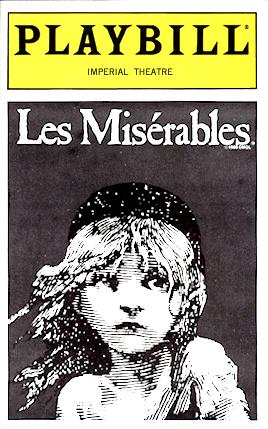
AMERICAN PSYCHO: The Text
“Soon everything seemed dull: another sunrise, the lives of heroes, falling in love, war, the discoveries people made about each other. The only thing that didn’t bore me, obviously enough, was how much money Tim Price made, and yet in its obviousness it did. There wasn’t a clear, identifiable emotion within me, except for greed and, possibly, total disgust. I had all the characteristics of a human being–flesh, blood, skin, hair–but my depersonalization was so intense, had gone so deep, that the normal ability to feel compassion had been eradicated, the victim of a slow, purposeful erasure. I was simply imitating reality, a rough resemblance of a human being, with only a dim corner of my mind functioning. Something horrible was happening and yet I couldn’t figure out why–I couldn’t put my finger on it.” (page 282)
“Later – now – I’m telling Tiffany, “I’ll let you go, shhh…,” and I’m stroking her face, which is slick, owing to tears and Mace, gently, and it burns me that she actually looks up hopefully for a moment before she sees the lit match I’m holding in my hand that I’ve torn from a matchbook I picked up in the bar at Palio’s where I was having drinks with Robert Farrell and Robert Prechter last Friday, and I lower it to her eyes, which she instinctively closes, singeing both eyelashes and brows, then I finally use a Bic lighter and hold it up to both sockets, making sure they stay open with my fingers, burning my thumb and pinkie in the process, until the eyeballs burst. While she’s still conscious I roll her over, and spreading her ass cheeks, I nail a dildo that I’ve tied to a board deep into her rectum, using the nail gun. Then, turning her over again, her body weak with fear, I cut all the flesh off around her mouth and using the power drill with a detachable massive head I widen that hole while she shakes, protesting, and once I’m satisfied with the size of the hole I’ve created, her mouth open as wide as possible, a reddish-black tunnel of twisted tongue and loosened teeth, I force my hand down, deep into her throat, until it disappears up to my wrist – all the while her head shakes uncontrollably, but she can’t bite down since the power drill ripped her teeth out of her gums – and grab at the veins lodged there like tubes and I loosen them with my fingers and when I’ve gotten a good grip on them violently yank them out through her open mouth, pulling until the neck caves in, disappears, the skin tightens and splits though there’s little blood. Most of the neck’s innards, including the jugular, hang out of her mouth and her whole body starts twitching, like a roach on its back, shaking spasmodically, her melted eyes running down her face mixing with the tears and Mace, and then quickly, not wanting to waste time, I turn off the lights and in the dark before she dies I rip open her stomach with my bare hands. I can’t tell what I’m doing with them but it’s making wet snapping sounds and my hands are hot and covered with something.” (page 304-305)
“I make no comment, lost in my own private maze, thinking about other things: warrants, stock offerings, ESOPs, LBOs, IPOs, finances, refinances, debentures, converts, proxy statements, 8-Ks, 10-Qs, zero coupons, PiKs, GNPs, the IMF, hot executive gadgets, billionaires, Kenkichi Nakajima, infinity, Infinity, how fast a luxury car should go, bailouts, junk bonds, whether to cancel my subscription to The Economist, the Christmas Eve when I was fourteen and had raped one of our maids, Inclusivity, envying someone’s life, whether someone could survive a fractured skull, waiting in airports, stifling a scream, credit cards and someone’s passport and a book of matches from La Côte Basque splattered with blood, surface surface surface, a Rolls is a Rolls is a Rolls. To Evelyn our relationship is yellow and blue, but to me it’s a gray place, most of it blacked out, bombed, footage from the film in my head is endless shots of stone and any language heard is utterly foreign, the sound flickering away over new images: blood pouring from automated tellers, women giving birth through their assholes, embryos frozen or scrambled (which is it?), nuclear warheads, billions of dollars, the total destruction of the world, someone gets beaten up, someone else dies, sometimes bloodlessly, more often mostly by rifle shot, assassinations, comas, life played out as a sitcom, a blank canvas that reconfigures itself into a soap opera. It’s an isolation ward that serves only to expose my own severely impaired capacity to feel. I am at its center, out of season, and no one ever asks me for any identification. I suddenly imagine Evelyn’s skeleton, twisted and crumbling, and this fills me with glee. It takes a long time to answer her question – Where are you going? – but after a sip of the port, then the dry beer, rousing myself, I tell her, at the same time wondering: If I were an actual automaton what difference would there really be?” (pages 342-343)
“The smell of blood works its way into my dreams, which are, for the most part, terrible: on an ocean liner that catches fire, witnessing volcanic eruptions in Hawaii, the violent deaths of most of the inside traders at Salomon, James Robinson doing something bad to me, finding myself back at boarding school, then at Harvard, the dead walk among the living. The dreams are an endless reel of car wrecks and disaster footage, electric chairs and grisly suicides, syringes and mutilated pinup girls, flying saucers, marble Jacuzzis, pink peppercorns. When I wake up in a cold sweat I have to turn on the wide-screen television to block out the construction sounds that continue throughout the day, rising up from somewhere. A month ago was the anniversary of Elvis Presley’s death. Football games flash by, the sound turned off. I can hear the answering machine click once, its volume lowered, then twice. All summer long Madonna cries out to us, “life is a mystery, everyone must stand alone. . .”
When I’m moving down Broadway to meet Jean, my secretary, for brunch, in front of Tower Records a college student with a clipboard asks me to name the saddest song I know. I tell him, without pausing, “You Can’t Always Get What You Want” by the Beatles. Then he asks me to name the happiest song I know, and I say “Brilliant Disguise” by Bruce Springsteen. He nods, makes a note, and I move on, past Lincoln Center. An accident has happened. An ambulance is parked at the curb. A pile of intestines lies on the sidewalk in a pool of blood. I buy a very hard apple at a Korean deli which I eat on my way to meet Jean who, right now, stands at the Sixty-seventh Street entrance to Central Park on a cool, sunny day in September. When we look up at the clouds she sees an island, a puppy dog, Alaska, a tulip. I see, but don’t tell her, a Gucci money clip, an ax, a woman cut in two, a large puffy white puddle of blood that spreads across the sky, dripping over the city, onto Manhattan.” (page 371)
“… where there was nature and earth, life and water, I saw a desert landscape that was unending, resembling some sort of crater, so devoid of reason and light and spirit that the mind could not grasp it on any sort of conscious level and if you came close the mind would reel backward, unable to take it in. It was a vision so clear and real and vital to me that in its purity it was almost abstract. This was what I could understand, this was how I lived my life, what I constructed my movement around, how I dealt with the tangible. This was the geography around which my reality revolved: it did not occur to me, ever, that people were good or that a man was capable of change, or that the world could be a better place through one’s taking pleasure in a look or a feeling or a gesture, or receiving another person’s love or kindness. Nothing was affirmative, the term ‘generosity of spirit’ applied to nothing, was a cliché, was some kind of bad joke. Sex is mathematics. Individuality no longer an issue. What does intelligence signify? Define reason. Desire – meaningless. Intellect is not a cure. Justice is dead. Fear, recrimination, innocence, sympathy, guilt, waste, failue, grief, were things, emotions, that no one really felt anymore. Reflection is useless, the world is senseless. Evil is its only permanence. God is not alive. Love cannot be trusted. Surface, surface, surface was all that anyone found meaning in … this was civilization as I saw it, colossal and jagged…” (page 374-375)
“…there is an idea of a Patrick Bateman, some kind of abstraction, but there is no real me, only an entity, something illusory, and though I can hide my cold gaze and you can shake my hand and feel flesh gripping yours and maybe you can even sense our lifestyles are probably comparable: I simply am not there. It is hard for me to make sense on any given level. Myself is fabricated, an aberration. I am a noncontingent human being. My personality is sketchy and unformed, my heartlessness goes deep and is persistent. My conscience, my pity, my hopes disappeared a long time ago (probably at Harvard) if they ever did exist. There are no more barriers to cross. All I have in common with the uncontrollable and the insane, the vicious and the evil, all the mayhem I have caused and my utter indifference toward it, I have now surpassed. I still, though, hold on to one single bleak truth: no one is safe, nothing is redeemed. Yet I am blameless. Each model of human behavior must be assumed to have some validity. Is evil something you are? Or is it something you do? My pain is constant and sharp and I do not hope for a better world for anyone. In fact I want my pain to be inflicted on others. I want no one to escape. But even after admitting this – and I have, countless times, in just about every act I’ve committed – and coming face-to-face with these truths, there is no catharsis. I gain no deeper knowledge about myself, no new understanding can be extracted from my telling. There has been no reason for me to tell you any of this. This confession has meant nothing ….” (376-377)
____________
AMERICAN PSYCHO: The Questions
What follows are ten questions I’d love to ask Ellis about his book should I ever get a chance to interview him in the future. I tried to avoid the obvious question that everyone always seems to ask (“Did he really kill all those people, or was it all in his head?”) and focused more on little things about the book that obsess me (yet would probably bore the average person to tears). Here we go:
1. When you introduced Patrick Bateman as a minor character in Rules of Attraction, did you have any idea then that he’d be the star of your third book? If not, what was it about this minor character that inspired you to make him a lead (in Rules of Attraction Patrick comes off as the older, responsible brother as compared to Sean, and no clues are given regarding his psychotic tendencies that would surface in American Psycho, though it is interesting to note that in Rules it’s mentioned that Bateman is dating Evelyn, who at the time is a Junior Executive at American Express. Bateman makes a reference to Evelyn’s job in the opening chapter of AP, yet he doesn’t reveal the company name).
2. Why did you decide to call the book American Psycho? Did you intend to evoke the spirit of the film Psycho (which is name checked in the book itself?)
3. What was the decision-making process used for deciding what bands Bateman would review? Why Genesis, Huey Lewis and Whitney Houston, and not some of the other big bands of the late 80’s? (Though, looking at the Billboard charts during that era, all three of the above artists were vastly popular). The yuppies you hung out with, was this the kind of music they were into?
4. Timothy Price: he is a very prominent character for the first 50 pages or so until he abruptly exits the text, only to appear again near the very end of the book with a weird smudge on his forehead (that only Bateman notices). What was the significance of this character? To show that no one can escape from this hell (symbolized by the novel’s last line, “This is not an exit?”) Price does seem like a different character after he resurfaces, or at the very least he doesn’t seem as shallow as he did before (though even in the first 50 pages he’s the only yuppie amongst Bateman’s friends to show any sort of intelligence). In my own personal interpretation, Price has undergone some kind of shamanic experience during his time away from Manhattan. The fact that he runs away alone into a tunnel (at the nightclub Tunnel) seems very much like a shaman turning his back on society and entering the so-called “Underworld.” During a shamanic experience the shaman undergoes a symbolic death and is torn to pieces, only to be re-assembled, often with a new artifact placed inside their body, such as a bone or a stone that gives them deeper insight, and this holy artifact is usually placed in the forehead, where the Third Eye is located (hence the smudge on his forehead). Well, that’s my own theory, though I’m sure it’s off. I know some people have claimed the smudge is a lesion as a result of AIDS.
5. For the first 300 pages or so of the book, the fragments are fairly extended. For example, there are about 11 fragments in the first 100 pages, 14 for pages 100-200, and 13 for pages 200-300. Yet there are about 22 during pages 300-399. Why did the scenes suddenly start to get shorter as the novel drew towards its conclusion? To make it seem like things were spiraling out of control, or…? Also, what was the point of some of the very short scenes towards the end like “Taking an Uzi to the Gym” or “Working Out?”
6. Regarding the narrative’s timeline, for most of the book it seems to follow some sort of linear/chronological order, until the last 12 chapters or so. Were these mistakes, or were they deliberate, to illustrate Bateman’s fragmenting psyche? Exactly when does the book end and begin?
7. I’ve always found the final 100 pages of American Psycho to be very odd. There’s one point where, for four straight chapters, you pretty much take scenes from Less Than Zero and just change the names and locations around to suit the new novel. What was the point of this self-plagiarism? To show that Bateman isn’t that much different from Clay?
8. What did Bateman’s “scary drawing” mentioned on page 306 look like, and why wasn’t it included in the final book?
9. I’ve read comments on the web that state that some of the novel was cut when it was picked up by Random House, mostly cuts made towards the beginning of the novel. What exactly was the nature of these cuts? I refer to the comments reported on this website.
10. Does David Onica actually exist, or is he a fictional creation? I can’t find any information on him anywhere.
____________

AMERICAN PSYCHO: The Trivia
– The Manic Street Preachers recorded a b-side called “Patrick Bateman” which was included on the 1992 single Le Tristesse Durera (Scream to a Sigh). Sadly, I have never heard this song, and if anyone has it on MP3 format, please let me know as I would love to hear it. The lyrics, inspired by the novel American Psycho, can be found below:
He’s a real cool guy and he’s a hero of mine
Travis, Rhinehart rolled into one cute son
Less than zero a grotesque nightmare
Subtly disturbing like normal behaviour
I understand nothing and I cannot speak
I’d walk in the park but the trees are diseased
No sweetheart and I am too confused
I only love my watch and my snake skin shoes
I feel so small in the supermarket queue
People seem to laugh at my choice of food
My personality is held together with sellotape
A loose fit just like a numb junkies hate
I pretty my face with all this cream and stuff
Ugliness inside much harder to cover up
I lack the thought to care about politics
Just do what I like ain’t that democratic
Genesis, Huey Lewis, Filofax, CD5
A backdrop to discuss over expensive wine
Didn’t even know when or why I should stop
I feel so stupid like a joke that belongs
I guess all psychos are made out of money
I cannot be saved as liberals keep telling me
I don’t wanna be understood I just wanna kill
Out of blandness I am your everyday thrill
Patrick Bateman
We are babies crippled in Christ
Patrick Bateman
Therefore I must be God
I must, I must be God
I touched your lips but now I just paint
Surface reflection all I desired babe
I am melancholy, flower cutting through stone
I am a crime everybody has at home
Papers hate me but they need my behaviour
The dignity amongst Hollywood trivia
Escape is so cheap of alcohol and whores
Mines the sanity of exclusive gun laws
Art critics say porno’s easily obscene
Late Show retards Dice Clay is true poetry
They’ve never tried living underneath the water
That’s real end of the century nausea
Patrick Bateman
We are babies crippled in Christ
Patrick Bateman
Therefore I must be God
I must, I must be God
Patrick Bateman
We are babies crippled in Christ
Patrick Bateman
I fucked God up the ass
I fucked God up the ass
Patrick Bateman
Patrick Bateman
Patrick Bateman
Patrick Bateman
– From Wikipedia: Ellis goes into great detail when describing the clothing in American Psycho; he has admitted that he himself is not fashion-conscious but puts in ridiculous amounts of research to get the facts right. In a recent interview he explained how he could write in such detail and how he played a little trick on his readers:
“Research. I don’t like clothes. I wrote two novels, one around the fashion industry and one around clothes whores, and it was all research. It was looking through GQ and seeing what the guys on Wall Street were wearing, since every other pictorial during those two years had guys hanging out in front of various office buildings downtown. Also, what a lot of people don’t realize, and what I had a lot of fun with, is that if you really saw the outfits Patrick Bateman describes, they’d look totally ridiculous. He would describe a certain kind of vest with a pair of pants and certain kind of shirt, and you think, ‘He really must know so much,’ but if you actually saw people dressed like this, they would look like clowns. It was a subtle joke. If you read it on a surface level and know nothing about clothes, you read American Psycho and think, ‘My God, we’re in some sort of princely kingdom where everyone just walked out of GQ.’ No. They look like fools. They look like court jesters, most of them.”
– The picture above is the 18” Patrick Bateman collectable put out by NECA. I have one myself, it’s really cool. It quotes ten lines from the movie (such as “Do you like Huey Lewis & the News?” and the immortal “I have to return some videotapes”) plus it comes with some cool items, such as an axe, a hatchet, a butcher knife, a briefcase, and even a tiny business card. I think a smaller toy action figure was also made, put out by Cult Classics.
– In the 1980’s Ellis was a member of what the media dubbed the literary “Brat Pack,” a group which also included Tama Janowitz and Jay McInerney. Coincidentally, two of those latter writer’s characters make an appearance in American Psycho: Stash (from Janowitz’ Slaves of New York) and Alison Poole (the main character from one of McInerney’s novels, I forget which one… Poole was also a key character in Ellis’ book Glamorama).
-Although Patrick Bateman is the lead character of American Psycho, it’s not the only book of Ellis’ that he has appeared in, as noted above. He first appeared in a chapter of Rules of Attraction, and he also makes a cameo in Glamorama, where he has a strange stain on his Armani jacket (he also tells Victor that he likes to “keep abreast” while staring at Chloe, and Victor later tells Chloe that Bateman owns a “coat of arms”). Bateman is also mentioned many times in Lunar Park, in which a variety of crimes are committed bearing Bateman’s trademark.
– One of the big reasons why there was such a moral outrage over the publication of the book was that people were worried that it might inspire others to kill in an attempt to emulate Bateman. To my knowledge, the only example of this was the case of Paul Bernardo, a Canadian serial killer/rapist who purchased the book at a Waldenbooks in New York on April 17, 1991 and considered it his “Bible.” (he was also 26 at the time, the same age as Bateman at the start of the novel). Like Bateman, he enjoyed working out, wearing designer brand-name clothes, and videotaping his murders. His wife/partner in crime, Karla Homolka, even bought him an imitation Rolex.
In Conclusion:
—-I think that this little essay clearly shows that, if I am not the world’s most obsessive American Psycho fan, I am at the very least in the upper echelon. For those who doubt, consider this. A short while ago I came across a website that had the entire text of American Psycho online (which is probably illegal!) So I cut & paste it into a Word document, mainly so I could get an accurate word count. Then I started going through the book, taking out all references to the name Patrick Bateman and placing my own name inside instead, in a bizarre attempt to insert myself into the text itself. I think I stopped the experiment around the “Tunnel” chapter, but it was a very odd experience, to say the very least!
—-(Final note: My ultimate American Psycho Holy Grail would be the outline Ellis wrote before he started the actual book itself, as I’ve read that his outlines are usually even longer than the books themselves. A secondary Grail would be the early drafts of the novel. I have always had a fascination with projects in their embryonic stages, before their finished state).
____________
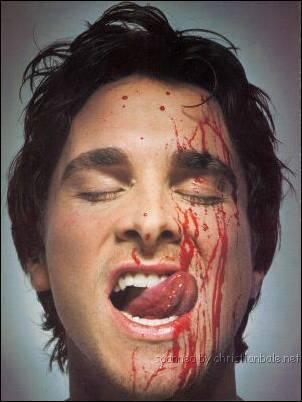
AMERICAN PSYCHO: THE LINKS
1. ___
2. ___
(Two radical feminists protest American Psycho. Entertaining.)
3. ___
(Check out the “press” section to read Ellis’ thoughts on the film version of his book.)
4. ___
(Dennis Cooper’s review of the film.)
5. ___
(There are many Patrick Bateman MySpace profiles, but this one is probably the best. Check out the guy doing a dead-on Bateman impersonation analysis of the career of Britney Spears).
6. ___
(article about Harry’s, the bar where Bateman and his yuppie pals enjoyed hanging out).
7. ___
(4th draft of the American Psycho screenplay).
8. ___
(unproduced screenplay by Matthew Markwalder, based on the book. Interesting.)
9. ___
(Jamie Clarke interviews Bret Easton Ellis. Possibly the most in-depth BEE interview on the web.)
10. ___
(Amazon text stat page for American Psycho. Includes the 100 most frequently used words in the book.)
11. ___
(American Psycho discussion forum. I don’t think anyone posts here anymore, sadly.)
12. ___
(Ellis didn’t actually write these Bateman e-mails that were used to promote the film, but they’re still a fun read.)
—-
*
p.s. Hey. ** jay, Hey. Cheers. I respect italics use and think it’s a wholly viable tool, I just have this kind of monk-like thing about writing fiction at the current time for some reason, except in case of emergency. ‘Slow Damage’: added to my short list. The TV/game system is in my living room, and that’s become my roommate’s office, so I only get to play when he’s out, and I only get to play in stops and starts, which is probably good for me, but it makes games more epic than seems fit. Ace that cold of yours. And bring down today’s rafters while you do. ** Misanthrope, Thanks. I’m in one of those lulls where I’m jonesing to be bombarded with work, but, you know, the good kind. Today Mario Party, tomorrow the world? ** Dominik, Hi!!! Yeah, precisely, you put it well. Um, I can’t say too much, and it would take way too lengthy a comment t explain if I could, but, basically, the person who has been causing the film and us hell for forever is now legally removed from the project, so the film is now fully Zac’s and mine, and it’s free, and now, even though we have inherited the problems that person created, at least we can finally put the last touches on the film and figure out when and where it will be born. Pretty big breakthrough. As someone whose love is technically older than your love, I can confirm that your love’s realisation is realistic. Love wondering what dogs think when they stare out the window, G. ** _Black_Acrylic, Yeah, Le Grice is kind of an experimental filmmaker’s experimental filmmaker, if you know what I mean. I’m happy there are at least three more PTs, but I’m just as heavily pro your prospective writing. Such a dilemma! ** Diego Luis Sanromán, Hi! Oh, cool, I’ll go revisit it. Thank you so much! Everyone, I was recently interviewed by Diego Luis Sanromán about my anarchism for the great and potent Spanish language magazine Rojo Y Negro, and you can download the issue that said interview is in if you like by going here. ** That G, Whoa, hi, G! I’ve been wondering how you are. A novella! That’s very exciting news right there! Massive luck with your agent if you need any of mine. That’s great! I’m fine. The film is finally very close to being completely finished and put out into the world, so things are good. Miss you too. Are you doing anything that could be characterised as remotely Xmas-y? ** James, Hi … I still haven’t thought up a worthy and appropriate nickname for you, but I’m not giving up. Literally astounding good luck with your interview this morning. Did that astounding luck pay off? Happy that Le Grice’s stuff not only fits in your book but is cool there. Doubling down on that prayer for our respective prayers. If you don’t go to fancy designer vegetarian restaurants, yes, being veg is cheaper. Meat is inherently expensive to one degree or another, unlike most non-meat substances. Well, it wasn’t bad this past summer, but it got up to 40+ last year, but only for devastating day or four. Paris is in tact, yes, just a bit refrigerated. Pray tell where the interview lead. ** Lucas, Your today sounds utterly mind frying, but I know you’ll find a way to end up fit and perky in the aspects of you where it counts. But still. No chance that Xmas concert held some tear-jerking joy? ‘What’s the worth in ever sharing this? is a question posed to you by an impure, externally implanted version of you that doesn’t make sense. Uh, the great film news comes with a cost, namely a bunch of problems, mostly money-related, that we now have to figure out how to solve. So, we have to do that. And we have a new producer we want to work with, because the film needs one, and I think that will work out. But, yeah, a lot to do, but the film is free to seek its public life now, and that’s what matters. My Tuesday doesn’t look too exciting so far, but, yes, it’ll probably beat yours, although you’re pretty good at turning mud into chocolate. ** Poecilia, Hi there! Yeah it’s Tuesday, but Happy Monday sounds better than Happy Tuesday, doesn’t it? Yeah, that ‘earned’ comment was extremely annoying and yet self-incriminating at the same time at least. But I’ve heard that so many times re: my work. Thank you about the PGL light. Where we shot it — Cherbourg — gets a lot of the credit, but we did pick and choose the times of day and did adjust the degrees in the editing room. But, yes, it’s Zac who made the magic. Thank you! Well, I can talk kind of lazily for sure, but I probably meant to say that Roman, the boy, didn’t see it as suicide, and his friends were sufficiently enamoured with his ambition that they didn’t see it, or want to see it, as suicide either, but I think it’s pretty clear that after the last shot of film fades to black, it was suicide whether he would have liked it or not. The grand finale was definitely constructed to ideally relocate the film’s world and meaning into the head of the viewer and be finished with complete freedom there with the film becoming the material that the viewer’s imagination is given to work with, if that makes sense? I really, really appreciate your words and your questions. ** Justin D, Hey. My utter pleasure, sir. Thank you about the film. Yes, there are hurdles left, and new hurdles created by the accomplishing of that large goal, so there’s plenty to still figure out. But the film is actually free now, as I said, and none of the problems ahead will keep it from entering the world. So, that the hugest thing. Thank you, pal. ** Uday, Hi. Thanks. I kind of like being a punter though. Being a Paris resident who doesn’t speak French kind of makes me a punter whenever I’m outdoors. It’s very relaxing. Cool about the essay. Sincerity’s good. I think I’m kind of a really sincere person, and I’m doing okay, I think? That is a very interesting quote. Troubling, yes, but it sticks around post-reading it. Mint, yes, I like mint. I like mint gum. I like mint ice cream. I like mint + chocolate cookies. I also like the word mint, especially when it’s used as a verb. So, yes, I do. I’m thinking you might as well? ** HaRpEr, Luck with the gallery, or fuck them if they’re self-appointed protectionists of the public with sticks up their butts. The texts sound good to me. Weird about you guys’ storm. I know Paris and you are not quite next door, but it does seem somehow weird that the sky is going nuts over there and here it’s just dead still and a little soggy. What a prick, that guy, the not-minding-his-own-business guy. Sorry. I do that revisionist pre-supposing thing too, but more about nerve-wracking things that are about to happen. I run through every riposte and possible outcome I can think of until I find the most logical one, and that relaxes me. No surprise that I think, yes, confusing someone is the ultimate weapon. If you watch, like, videos of dangerous encounters of humans and, like, bears, the humans who don’t get killed usually only stay alive because they confused the bear. It’s interesting. ** Tyler Ookami, Hi, Tyler! It has been at least a wee bit, for sure. Sorry about the job mess. I’m on your side. That’s a big reason I’ve always tried to make sure I was my only boss. So, what horror movie did they show you? Was it surprising? Was it horrific? Was it admirable? Too many questions. Mainly, really good to get to talk with you again. ** Right. Sypha, aka the writer James Champagne, has made a number of guest-posts over the years, and they’re always meticulous, highly personal, and yet, at the same time, very ‘everything you could possibly want to know’-type things about his chosen topic, and there above is the long-ago post where he tackled Bret Ellis’s most famous novel. I should forewarn you that some of the links at the bottom of it are dead now, sadly. Anyway, have fun and share your own opinions and all of that good stuff. See you tomorrow.

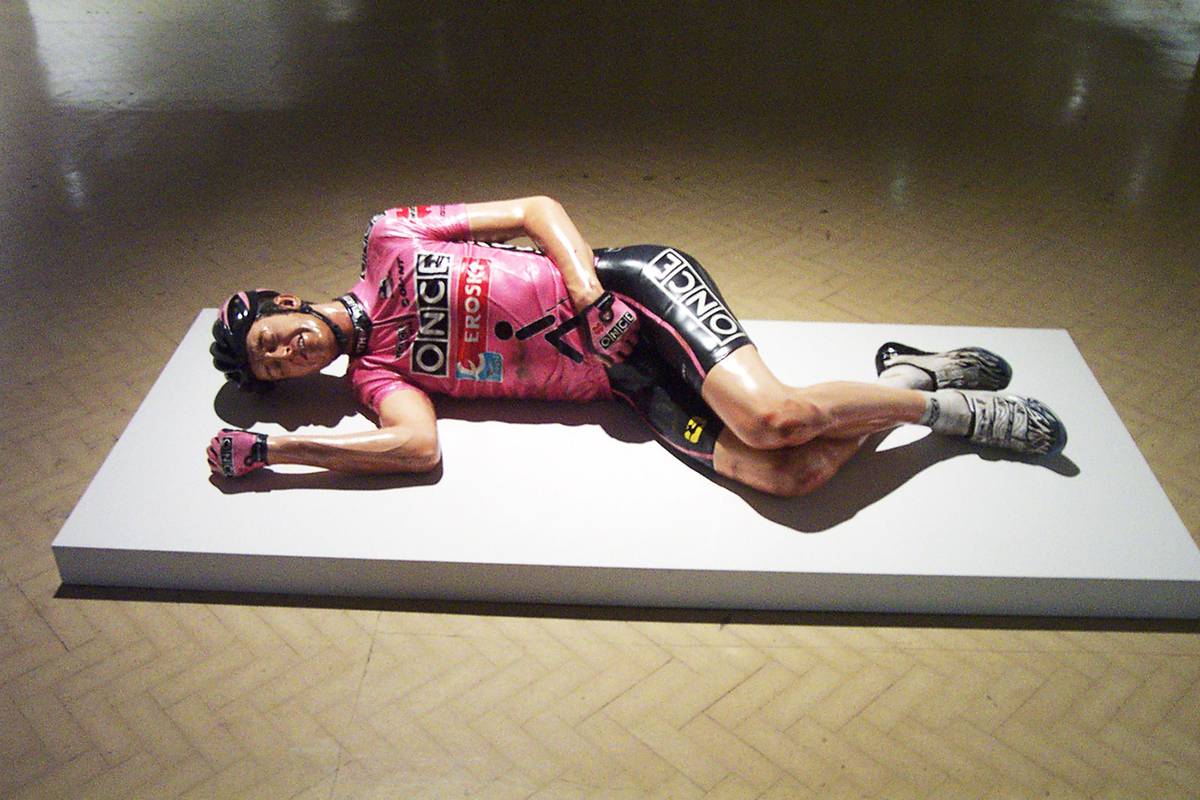
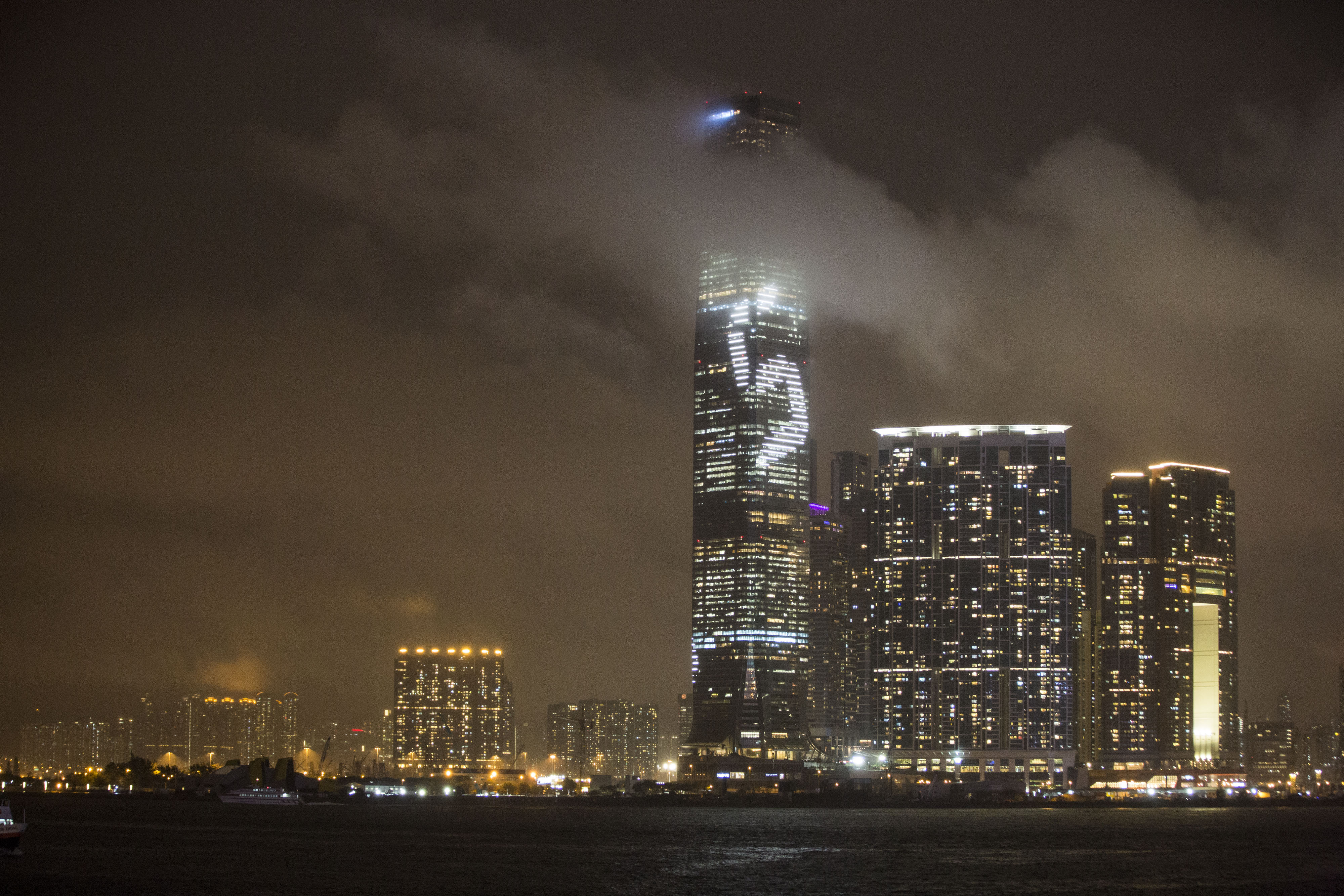
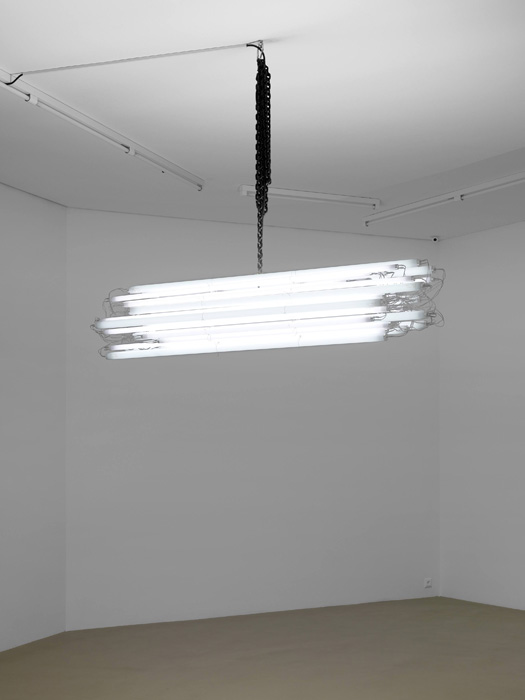

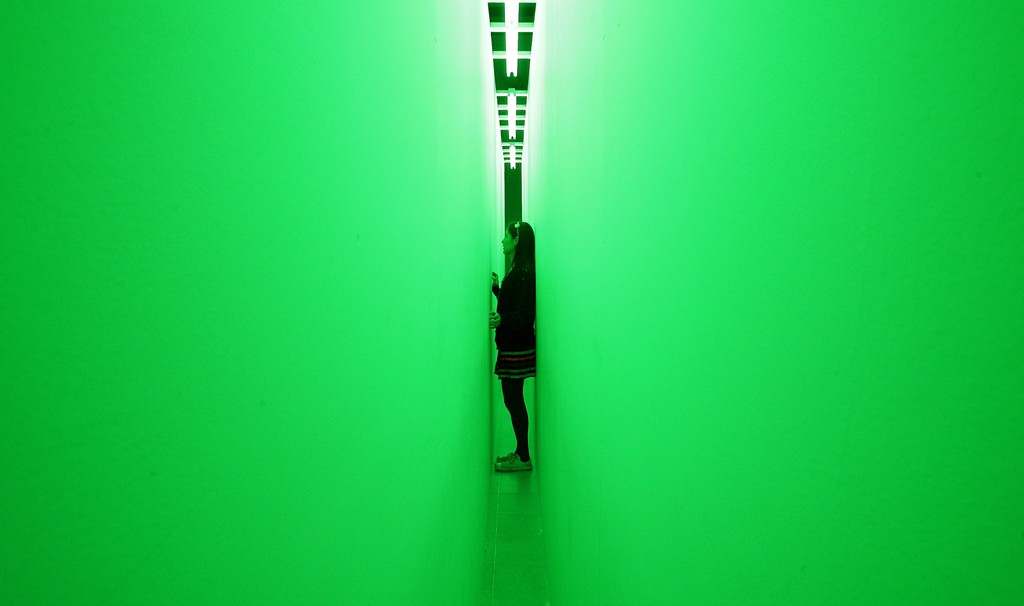
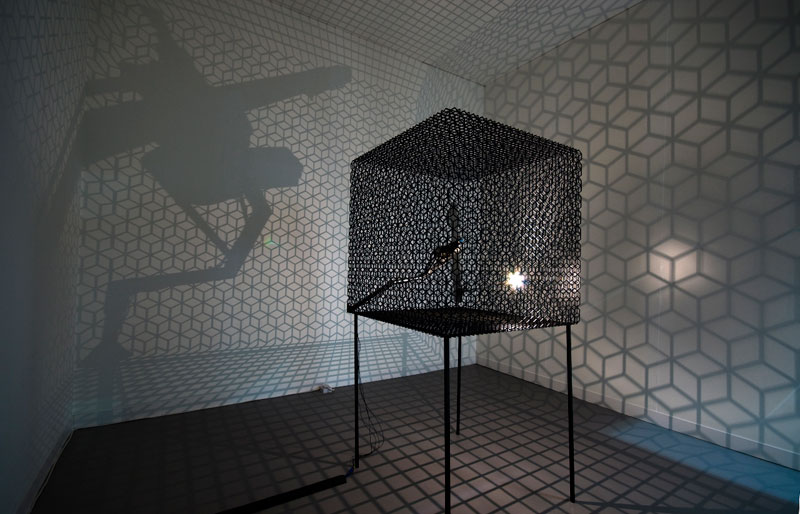
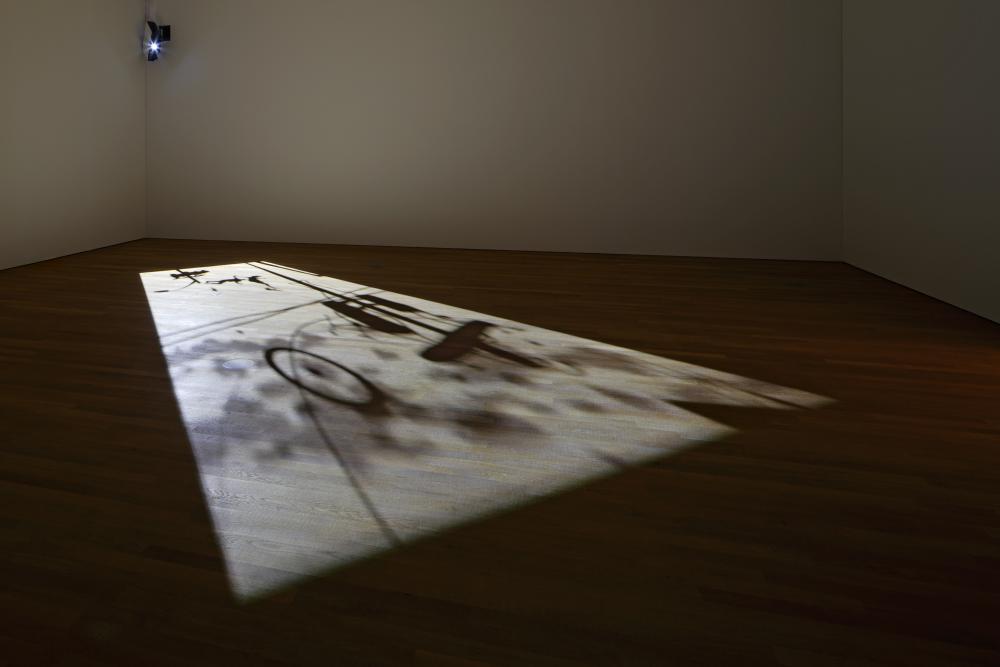
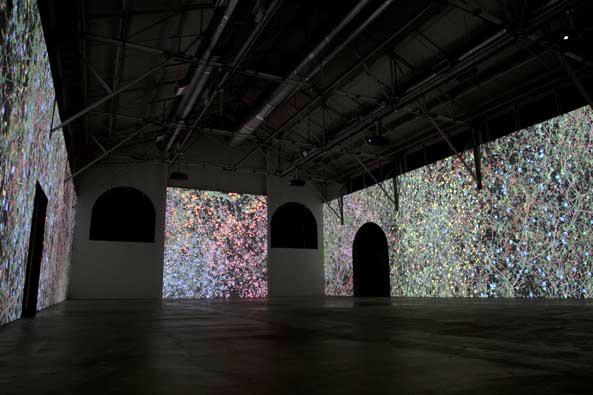


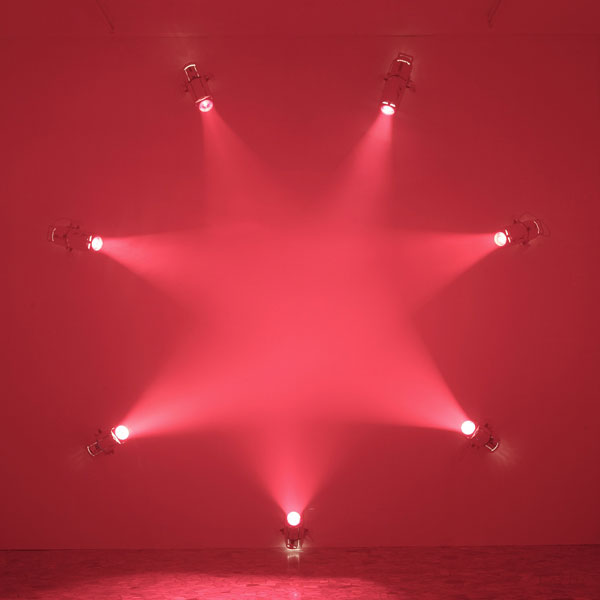

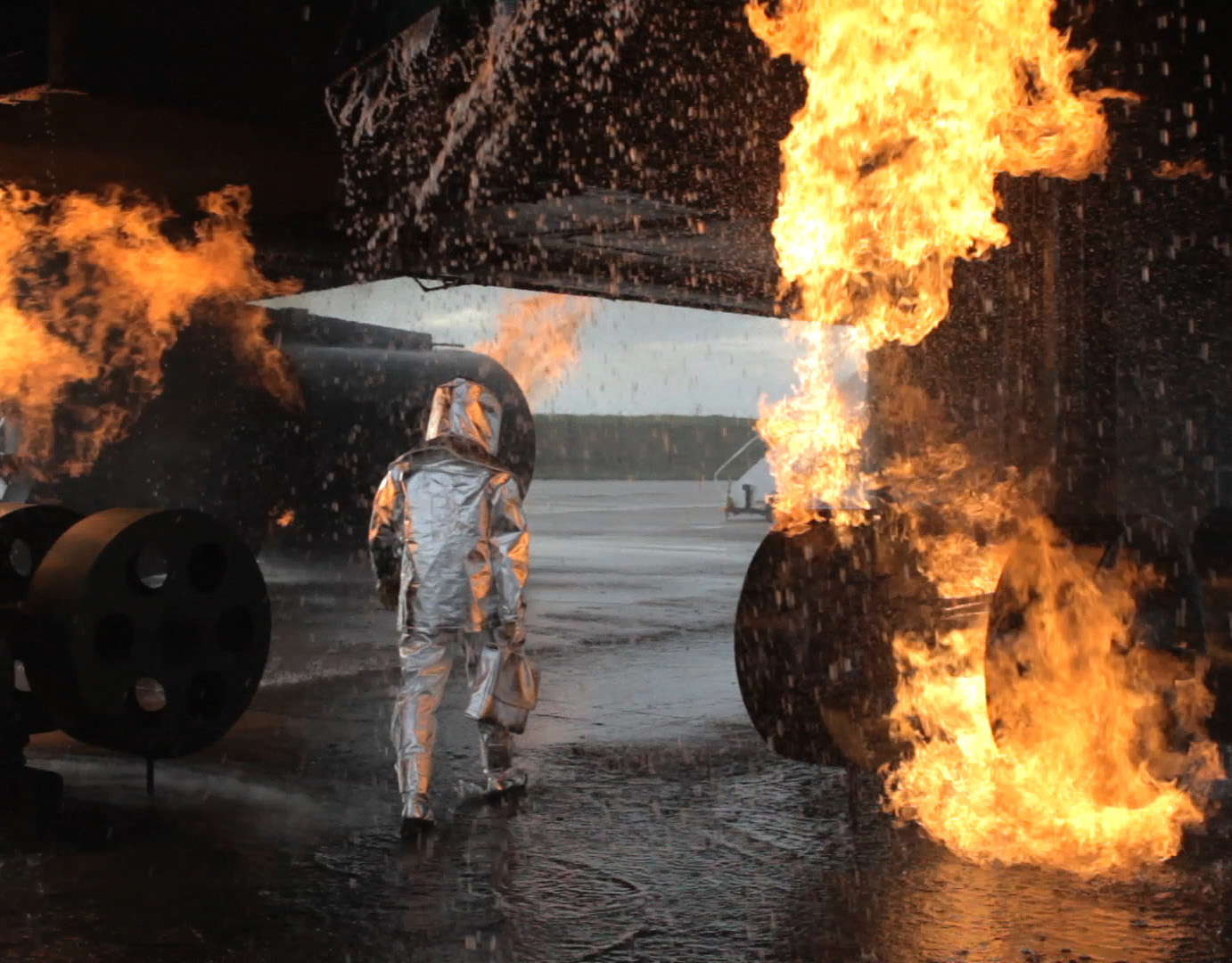

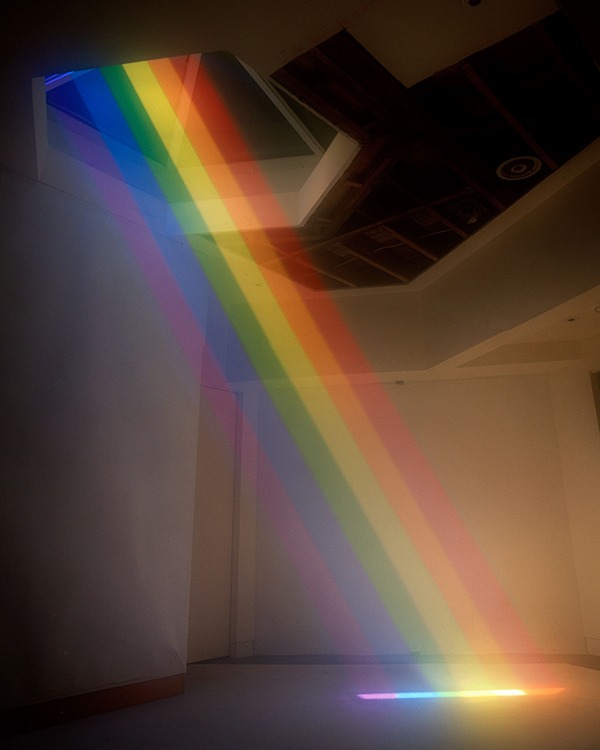
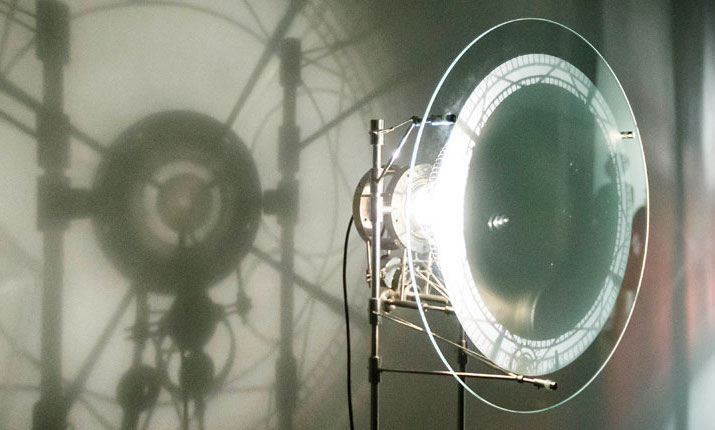
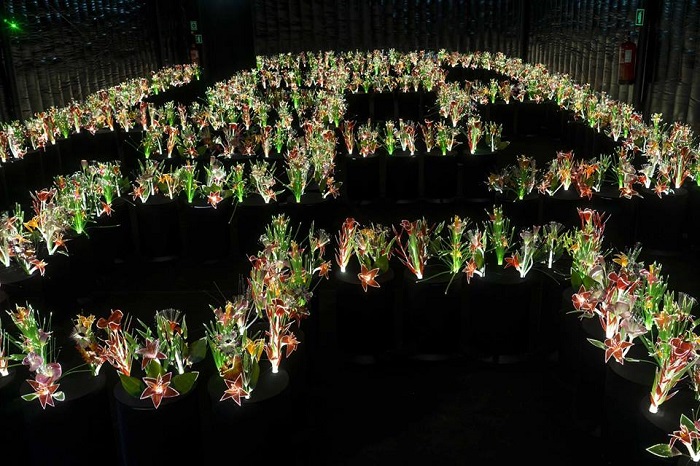

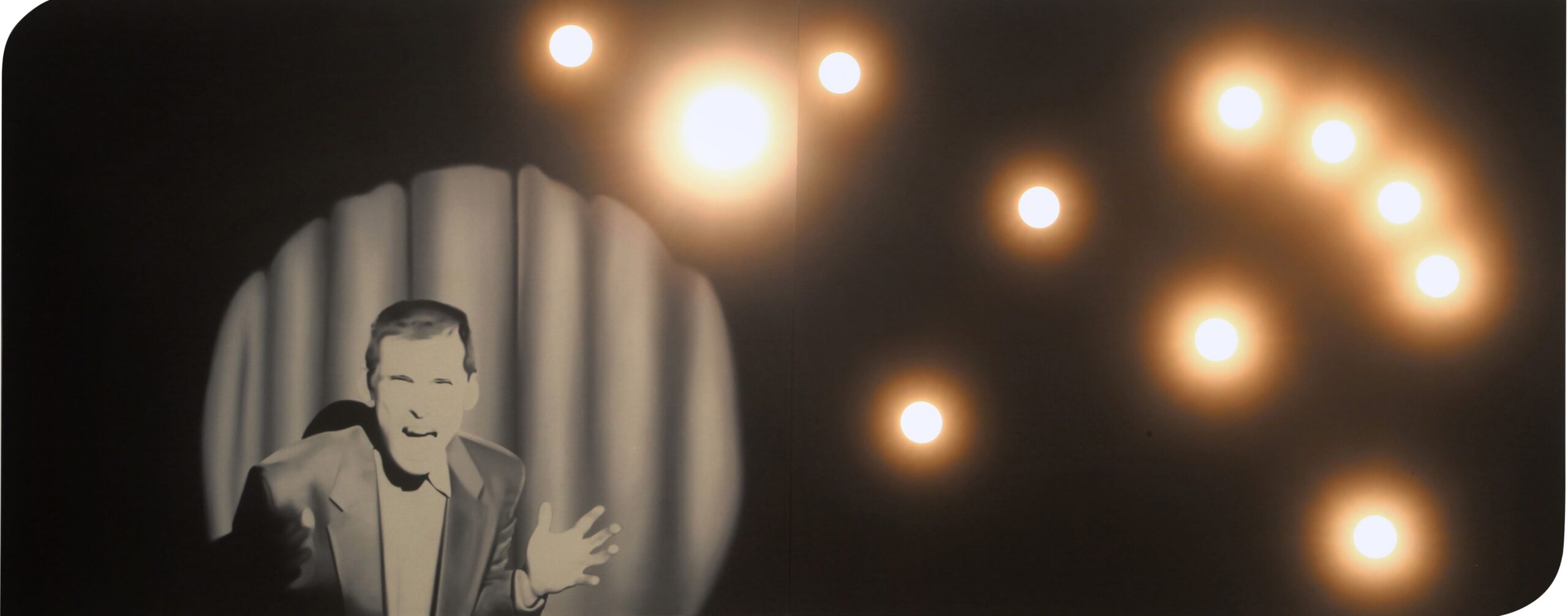




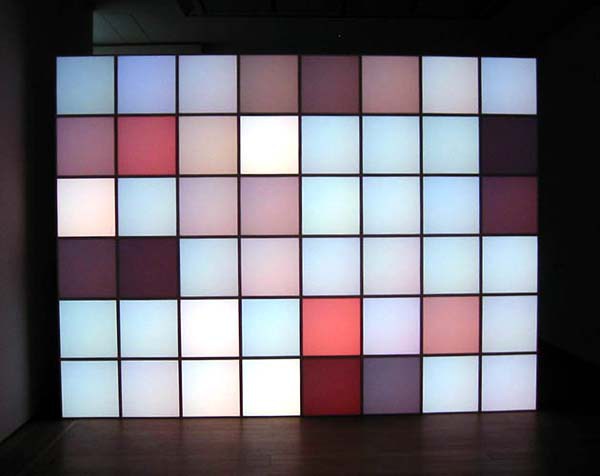



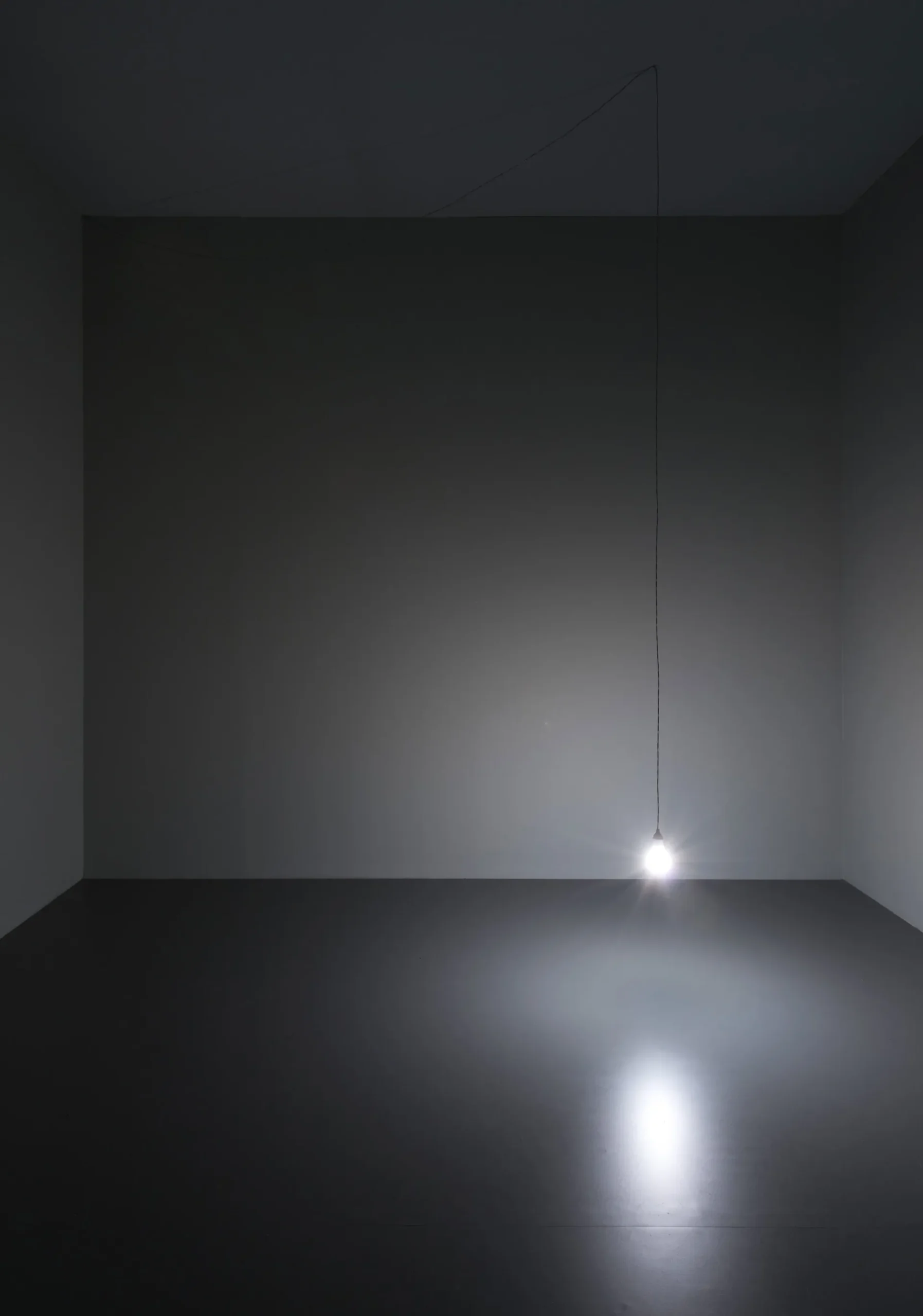
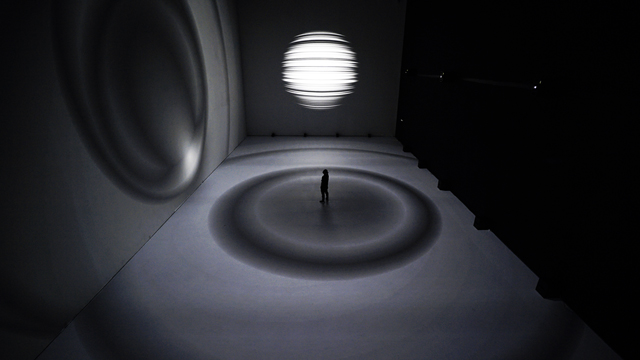















 Now available in North America
Now available in North America 